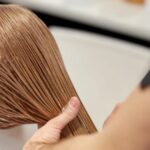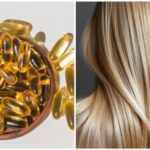This dry shampoo is a quick and convenient product, designed to absorb excess oil from your hair and scalp, placing dry shampoo at an obvious advantage. Sprayed or powdered on the hair, it provides volume and texture, which is the reason dry shampoo is popular in between regular washes.
Making homemade dry shampoo is simple and can be done with a few natural ingredients. Here are common recipes for light and dark hair.
Easy homemade dry shampoo
Making a homemade dry shampoo is easy with very few basic ingredients. Here is an easy recipe for you:
Ingredients:
Light Hair:
1/4 cup of cornstarch or arrowroot powder
1 tablespoon baking soda (optional for an extra oil absorber)
Dark Hair:
1/4 cup of cocoa powder (for darker tint)
1/4 cup of cornstarch or arrowroot powder
Essential oils (optional) – to scent with lavender or tea tree oil. About 5-10 drops.
How to make
Mix the Following:
In a small bowl, mix cornstarch or arrowroot powder (and baking soda if using) for light hair; to dark hair, add cocoa powder to the mix.
Essential Oils (Optional):
Add essential oils for that nice scent- 5-10 drops.
Combine:
Mix until you have a smooth powder and no lumps.
Application:
Apply the dry shampoo with an applicator brush, or sprinkle the shampoo directly onto the roots. Rub in with your fingers or brush it through for blending.
Brush Off:
Let it sit for a few minutes, and brush it off all the excess powder.
Why this dry shampoo recipe is so great
Made From Natural Ingredients: It uses plain, natural ingredients like cornstarch and baking soda, which don’t aggravate the scalp or the hair. This avoids the need for harmful chemicals or artificial additives.
Adjustable Recipe: You can tweak the recipe for your own hair type and color. Adding cocoa powder is great for darker hair, while cornstarch works for lighter shades. You can even throw in a few drops of your favorite essential oil for that personalized touch.
Affordable: For the most part, the ingredients can probably be found in the average kitchen, making them more thrifty compared to the massively priced dry shampoos in stores.
Quick and Easy: Takes two minutes to mix up and apply; great for those “I-need-a-bath-but-not-today” kind of mornings!
Less Waste: The things you make yourself let you avoid unnecessary packaging that you’d otherwise get from store-bought alternatives-a small win for Mother Nature.
How to apply
Homemade dry shampoo is applied as follows:
Shake or stir: Make sure your powder form dry shampoo (cornstarch or baking soda) is shaken well or stirred so the ingredients are homogeneously distributed.
Section the hair: While this step is not necessary for short hair but may make it easier to apply if you have thick, long hair, it is good to section your hair into parts.
Powder that: You’re all set to now apply your dry shampoo, either with a makeup brush or some old one or better, a clean powder puff. Sprinkle some powder onto your scalp, especially focusing on that oily part.
Rub it in: Make sure to rub this dry shampoo into your scalp very gently using your fingers. It helps the powder absorb oil and blend in with your hair.
Brush it out: Use a brush to work it in and get rid of the excess powder.
Style as normal: Once applied and blended in, style your hair as normal; it should feel fresh and look less oily.
FAQs
What is a good substitute for dry shampoo?
Great substitutes include baby powder, tapioca flour, or arrowroot powder; these all work excellently at absorbing oil with no purchase necessary.
Can I use perfume as dry shampoo?
Many would not recommend that. Although perfume can cover odor, it cannot absorb oil or promote scalp health as dry shampoo does. The nature of perfume with alcohol also makes the hair and scalp susceptible to drying.
Is dry shampoo good for hair?
It can do wonders to help refresh your hair and reduce greasy appearances in between washes, but frequent use can lead to product building-up on the scalp and hair, so don’t rely on it all the time.
How to make homemade dry shampoo without cornstarch?
You can use arrowroot powder or rice flour as a base. Add a few drops of essential oil for fragrance if you like. This can be sprinkled onto your roots and massaged in to absorb oil.
Is there a better alternative to dry shampoo?
If you take a natural approach-like washing your hair less and using a microfiber towel to reduce oil build-up-you’ll find that works great. Swishing water through your hair and running a light leave-in conditioner can freshen it up without needing dry shampoo.
Is dry shampoo safe?
Dry shampoo is considered safe for use if it is used with care and not too frequently. However, too much recurrent build-up of products on the scalp could flare up irritations or impede the follicle opening on the hair.
Is homemade dry shampoo safe?
Yes, homemade dry shampoo can be safe if you make it from non-irritating ingredients. Just make sure you do a small test patch on your scalp to rule out sensitivities.
Is dry shampoo just baking soda?
Usually dry shampoo is a mixture of varied ingredients, but baking soda may be employed for its oil-absorbing qualities in DIY versions. It can also be too harsh and too drying for certain individuals, so using it sparingly would be best.











